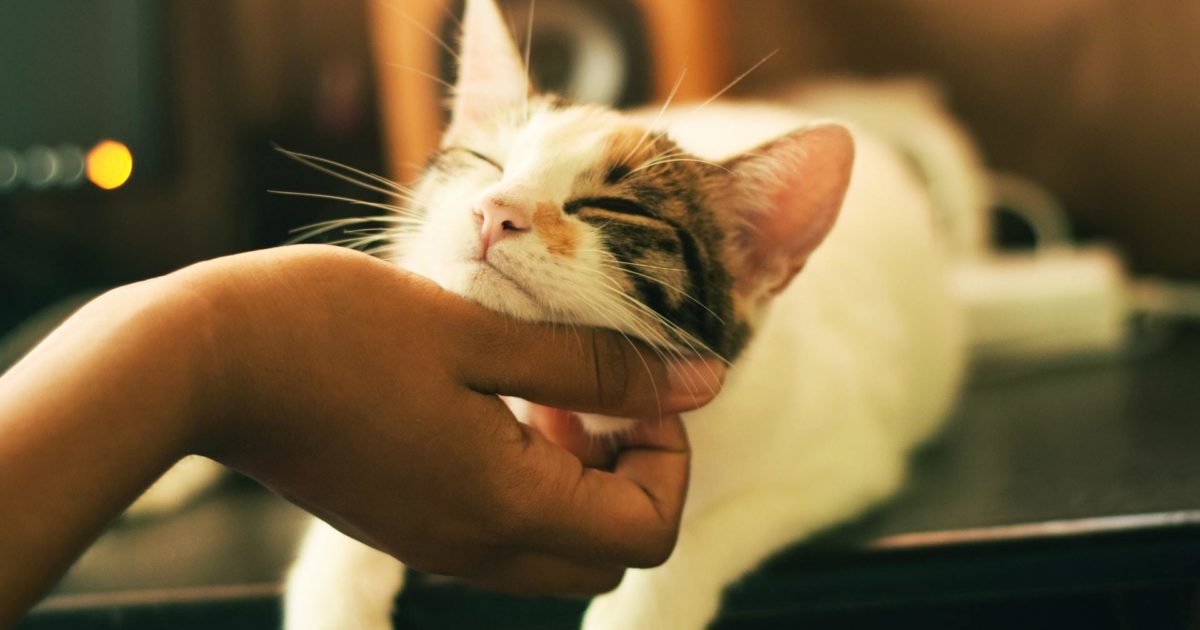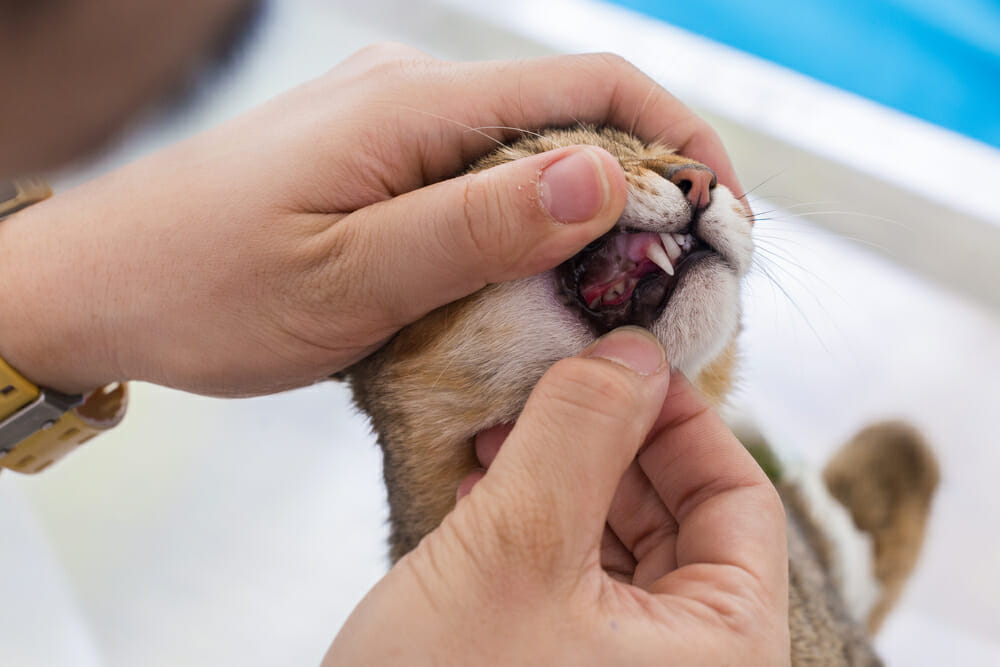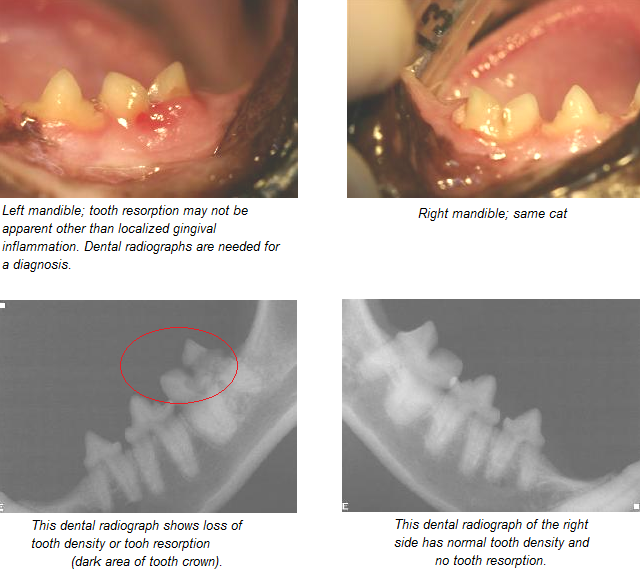tooth resorption cats prognosis
Your vet may also perform a complete dental screening. It is often difficult for the owners to determine whether the cat has any dental problem.

Feline Tooth Resorption Today S Veterinary Practice
Tooth resorption in cats unfortunately often goes undiagnosed.
. However a dental explorer should be used to examine each tooth above and. Although its development may seem unpredictable at times resorption is a common condition that veterinarians and technicians must understand to provide optimal care. Enjoy Fast Free Shipping On Orders 49 With 100 Satisfaction Guaranteed.
Tooth resorption is a centuries-old disease that continues to puzzle the veterinary profession. Cats with clinically missing teeth have also been found to be more likely to have tooth resorption. TOOTH RESORPTION IN CATS Pathophysiology and treatment options Practical relevance.
If your cat has tooth resorption she may show increased salivation oral bleeding or difficulty eating. Tooth resorption TR occurs when the hard tissue under the tooth enamel called dentin wears down and is eventually destroyed. Most of the times tooth resorption in cats goes unnoticed and the cat may suffer a lot due to this.
In many cases without radiographic and clinical screening in an anesthetized cat tooth resorption will go undetected and the cat will be in pain in silence. The objective of this study was to collect preliminary data about tooth resorption TR from cats treated at the Odontology Service September 2016-June 2018 part of a University Veterinary Hospital in Spain with specific emphasis on TR distribution per tooth. Feline tooth resorption lesions are one of the top causes of tooth loss in cats.
The resorption is usually progressive but even extensive cases can sometimes be reversed. They start as small erosions in the dental enamel and progress both in size and depth. It affects the crown of the tooth to expose the nerve and dentin resulting in pain and inflammation.
If so you may have witnessed a case of feline tooth resorption. Periodontal disease oral neoplasia particularly squamous cell carcinoma feline stomatitis and tooth resorption. Resorptive lesions that have eroded through the enamel may be very painful.
Symptoms of Tooth Resorption in Cats. At a recent Fetch dvm360 conference Benita Altier LVT VTS Dentistry detailed the diagnosis and. All types of teeth in the feline dentition may.
This painful condition is believed to affect more than 65 of cats during their lifetime. The yellow arrow is pointing at the eroded area of the tooth next to the gum. Compare it to the appearance of the normal tooth next to it.
For this reason cats dont always get the care they need to relieve their pain and prevent further dental damage. Tooth resorption represents one of the most common diseases seen in domestic cats and occurs in 20-75 of cats depending on the population studied. Regarding the clinical signs of tooth resorption she says.
Oral disease in cats comprises four major conditions. Tooth resorption has become a common condition affecting the cat population in the recent years. Chewing with only one side of the mouth.
Cats with clinically missing teeth have also been found to be more likely to have tooth resorption. However while you might struggle with cavities in your teeth due to decay cats develop a different kind of deterioration in their teeth. Tooth resorption is common in the domestic cat and the incidence has been reported to increase with increasing age.
Loss of appetite might occur if the crown were to break off from a single tooth. In the second stage the lesions become larger but have not spread beyond the dentin. The lesions are small and close to the base of the tooth.
This painful dental condition affects up to 60 of adult and senior cats but its symptoms can be difficult to recognize with the untrained eye. Root canal therapy may help treat internal resorption but if there is a large defect the tooth may break apart and fail to function. If your veterinarian suspects your feline friend has this condition they will conduct radiographs and a clinical screening while your cat is under anesthesia.
If left untreated this disease can result in other oral problems pain infections and. The cause of tooth resorption is currently unknown but the condition seems to develop when a cell within the tooth called an odontoclast is activated and removes calcium from within the. Tooth resorption is common in the domestic cat and the incidence has been reported to increase with increasing age.
Cats with oral pain may. If cat tooth resorption is left untreated for a period of time the crown can break and cause tooth loss. Feline tooth resorption usually has five stages.
Gingivitis appears as a bright red section of the gums Vomiting. External resorption can be misdiagnosed. Deep erosion and severe lesions happen in.
This problem feline tooth resorption produces painful cavity-like lesions that weaken the teeth. Tooth Resorption in Cats Symptoms Signs. Diagnosis was based on visualtactile inspection and intraoral dental radiographs.
You should always take note of any slight behavioral changes in your pet and notify. A second opinion may be necessary. Ad Ensure Your Pet Is Happy And Healthy And Enjoy Savings On Pet Medications.
It goes without saying that dental care for. In that case the cat could be off its food for a significant amount of time24 to 72 hours say. All types of teeth in the feline dentition may be affected but lesions seem to be more common in certain teeth.
Tooth resorption in a domestic cat. Dropping food from the mouth. More than 50 of cats over 3 years of age will be affected by TR.
But in general the condition has to get to an extreme level before the cat stops eating. Stage one is the earliest stage of damage. Feline tooth resorption commonly affects cats as they grow older with up to 60 percent of the adult cat population and up to 75.
Over time all parts of affected teeth become involved and worn down. Treating Cats With Tooth Resorption. Full mouth veterinary dental radiographs are needed for both diagnosis and treatment.
Many lesions may be easily visible. Symptoms of tooth resorption in cats can range from. Tooth resorption in cats unfortunately often goes undiagnosed.
Tooth Resorption in Cats. The most common dental disease in domestic cats is a destructive process called tooth resorption. Drooling Having difficulty chewing Dropping food while chewing Chattering the.
Over time all areas of an affected tooth may become involved and tooth resorption is very painful for your cat. If you think your cat may have tooth resorption you should call your vet as quickly as possible.

Juvenile Gingivitis Periodontitis Advanced Animal Dentistry
Tooth Resorption In Dogs And Cats Vetbloom Blog

Feline Tooth Resorption How To Help Your Cat Firstvet
Tooth Resorption In Dogs And Cats Vetbloom Blog

Feline Tooth Resorption Today S Veterinary Practice

Feline Tooth Resorption Today S Veterinary Practice
Tooth Resorption In Dogs And Cats Vetbloom Blog

Feline Odontoclastic Resorption Lesions Forls Westwood Hills Veterinary Hospital

Feline Tooth Resorption Today S Veterinary Practice

Resorptive Lesions Feline Healthy Paws Animal Hospital

External Tooth Resorption In Cats Part 2 Therapeutic Approaches Today S Veterinary Practice

Dental Corner How To Detect And Treat Feline Odontoclastic Resorptive Lesions

External Tooth Resorption In Cats Part 2 Therapeutic Approaches Today S Veterinary Practice

Feline Tooth Resorption Today S Veterinary Practice

Risk Assessment Of Feline Tooth Resorption A Portuguese Clinical Case Control Study Semantic Scholar

Tooth Resorption In Cats Unfortunately Often Goes Undiagnosed